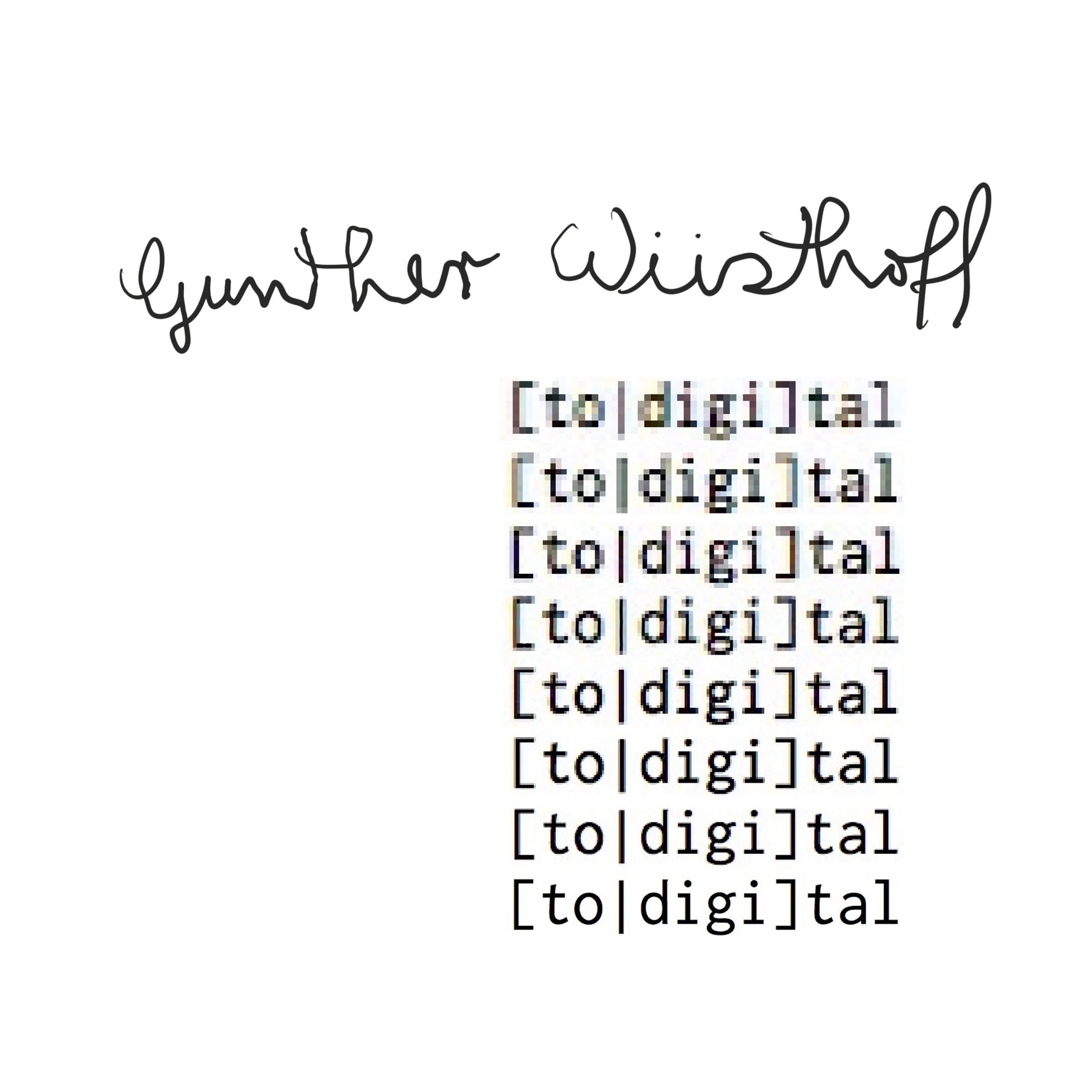BUREAU B is one of those beautifully interesting labels – nein, curators – out there on the fringes, lovingly delving in the depths of the crates, remastering and compiling, making sure an absolute plethora of lost music is brought back to our ears.
It’s main archival thrust is to dig beyond the major catalogue of the German experimental musics and krautrock scenes to bring blinking into the light the unreleased, the solo careers, the unreleased sessions.
And this week it is releasing a compilation of later machine and electronic works by Faust founder Gunther Wüsthoff, entitled [to|dig]ital.
Gunther had completed military service as a naval radio operator and was on a fine art course when he met Rudolf Sosna and Jean-Hervé Peron; the nucleus of what was to become Faust. He made five albums, including the seminal 48p-in-the-UK collection of offcuts, the Faust Tapes, before leaving in 1974.
He moved into behind-the-scenes studio roles in Hamburg, yet continued to make music. And [to|dig]ital gathers together tracks he made from 1979 to 2007.
Its very much an album of two halves. Opening triptych “TransNeptun Anflug” “TransNeptun Ankunft” and “TransNeptun Begrüßung” – phases, seemingly, of a landing on that distant world, divided into approach, arrival, and most ominously, burial – is deep, dark, ominous and synthetic-cyborgian. Synthesisers squeak and growl and groan, the deep space longwave; but there’s enough shift and layer and polyrhythm to suggest some infernal being at the controls waay over the horizon. You could genuinely assent that this is music from other worlds.
Part-machine, part musculoskeletal, like an HR Geiger dream made aural, it’ll certainly appeal to anyone who rubs musical shoulders with Ghost Box, Add N to (X), Bebe and Louis Barron or Pierre Bastien.

The second part is more concerned with systems musics arising from propulsive piano figures and acoustic bass, with a whole gallimaufry of itchy, skeleton orchestra percussive elements: bells, wood blocks, the works. It has that Faust motorik, but stripped back: krautrock as if conceived by an avant-garde composer for the Nonesuch label, if you will.
Of this systems approach, Gunther propounded: “If I tell a human artist that I’m not going to play the notated diminished seventh in the second quarter of the 34th bar, but a diminished second with a 37-millisecond delay, then that musician will think I’m loopy and will say ‘I can only play it right’, or ‘I don’t want to play it ‘wrong’ … this problem does not exist for machines. That is why I have become a music machinist and a mechanical musician.
“As a consequence, I have been drawn to aleatory music, handing over compositional control to the machines at times. The machine can ‘think up’ the parameters quite easily itself.
“You absolutely have to relinquish any expectations of virtuosity. A good sketch invariably says more than an elaborate oil painting which has taken eons to complete. The transitory nature of life, that’s what it’s all about in the end.”
In summation, then. If you’ve read this far, you lie under no illusion that you’ll find your latest summer barbie soundtrack here (or you have some pretty out-there friends).
It’s outré, it’s recherché; but it’s a treat if you find yourself sailing out in the still only partly charted waters of 60s’ and 70s’ experimental music.














No Comment